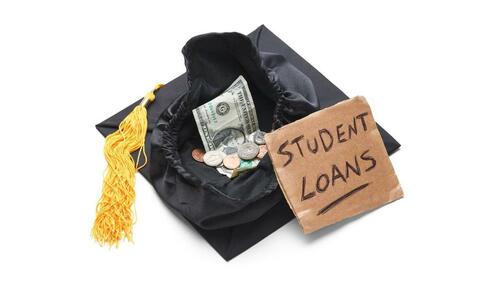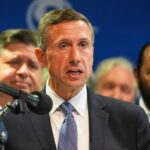
Companies which service student loans are preparing for chaos, as an unprecedented 44 million borrowers will resume payments later this summer following the expiration of a November 2022 extension of a pandemic-era pause, which stipulates that payments must resume by August 30, 2023.
"I think the real challenge is the resource constraint, right? That’s really on the customer service side," said Student Loan Servicing Alliance (SLSA) executive director, Scott Buchanan, in a statement to The Hill. "Systemically, we can handle this, but that customer service component is going to be constrained, and that’s because the [Education] Department has continued to make cuts to the customer service funding for student loan servicers."
According to SLSA, a nonprofit trade association that deals with servicing issues, its members are "responsible for servicing over 95% of all federal student loans and the vast majority of private loans."
That said, the lack of funding for customer service centers falls on the shoulders of Congress, which denied increased funding for the Federal Student Aid (FSA) office last year.
"It’s important to think about this holistically," said said Sarah Sattelmeyer, project director for education, opportunity, and mobility in the higher education initiative at New America. "FSA’s budget constraints are certainly affecting servicers. And I think that’s an incredibly huge problem because it affects the ability to effectively have a student loan support system. … All of the things that FSA has on its plate — it’s never had more things on its plate. There’s a lot of new reforms coming down the pipe, and a lack of funding is really impacting its ability to do all of that work."
According to the Department of Education, the funding Congress allocated for the FSA was more than enough.
"As the Department has repeatedly made clear, restarting repayment requires significant resources to avoid unnecessary harm to borrowers, such as cuts to servicing," said a spokesperson.
In preparation for student loan payments turning back on, the Education Department has announced multiple initiatives they say will make the transition easier for borrowers, including reforming the income-driven repayment (IDR) system so some borrowers wind up owing as low as $0 a month.
The department is still hoping the Supreme Court won’t kill President Biden’s student debt forgiveness program, though that will require it and the student loan servicers to take on the Herculean task of sweeping debt relief and loan repayment resumption at the same time. -The Hill
According to Spencer Orenstein, an officer on student borrower success for the Pew Charitable Trusts, of the 400,000 borrowers tracked over a five year period, 80% had interactions with their student loan servicer.
"Even prior to this, we were in a system where servicers played a very important role," he said.
Buchanan, meanwhile, thinks there could be a ripple effect of negative consequences which reverberates throughout the entire system.
"The department has meaningfully reduced the amount of resources we have and people we can put on the phones. That’s going to be a challenge where we will probably have longer hold time, and processing time for requests and applications could take a lot longer than usual," he said, adding: "We clearly communicated to the department the consequences, them knowing we need customer service and them making these kinds of cuts. Those discussions absolutely happened."
As of now, around 44 million borrowers haven't had to make payments on their student loans.
Companies which service student loans are preparing for chaos, as an unprecedented 44 million borrowers will resume payments later this summer following the expiration of a November 2022 extension of a pandemic-era pause, which stipulates that payments must resume by August 30, 2023.
“I think the real challenge is the resource constraint, right? That’s really on the customer service side,” said Student Loan Servicing Alliance (SLSA) executive director, Scott Buchanan, in a statement to The Hill. “Systemically, we can handle this, but that customer service component is going to be constrained, and that’s because the [Education] Department has continued to make cuts to the customer service funding for student loan servicers.”
According to SLSA, a nonprofit trade association that deals with servicing issues, its members are “responsible for servicing over 95% of all federal student loans and the vast majority of private loans.”
That said, the lack of funding for customer service centers falls on the shoulders of Congress, which denied increased funding for the Federal Student Aid (FSA) office last year.
“It’s important to think about this holistically,” said said Sarah Sattelmeyer, project director for education, opportunity, and mobility in the higher education initiative at New America. “FSA’s budget constraints are certainly affecting servicers. And I think that’s an incredibly huge problem because it affects the ability to effectively have a student loan support system. … All of the things that FSA has on its plate — it’s never had more things on its plate. There’s a lot of new reforms coming down the pipe, and a lack of funding is really impacting its ability to do all of that work.“
According to the Department of Education, the funding Congress allocated for the FSA was more than enough.
“As the Department has repeatedly made clear, restarting repayment requires significant resources to avoid unnecessary harm to borrowers, such as cuts to servicing,” said a spokesperson.
In preparation for student loan payments turning back on, the Education Department has announced multiple initiatives they say will make the transition easier for borrowers, including reforming the income-driven repayment (IDR) system so some borrowers wind up owing as low as $0 a month.
The department is still hoping the Supreme Court won’t kill President Biden’s student debt forgiveness program, though that will require it and the student loan servicers to take on the Herculean task of sweeping debt relief and loan repayment resumption at the same time. -The Hill
According to Spencer Orenstein, an officer on student borrower success for the Pew Charitable Trusts, of the 400,000 borrowers tracked over a five year period, 80% had interactions with their student loan servicer.
“Even prior to this, we were in a system where servicers played a very important role,” he said.
Buchanan, meanwhile, thinks there could be a ripple effect of negative consequences which reverberates throughout the entire system.
“The department has meaningfully reduced the amount of resources we have and people we can put on the phones. That’s going to be a challenge where we will probably have longer hold time, and processing time for requests and applications could take a lot longer than usual,” he said, adding: “We clearly communicated to the department the consequences, them knowing we need customer service and them making these kinds of cuts. Those discussions absolutely happened.”
As of now, around 44 million borrowers haven’t had to make payments on their student loans.
Loading…





